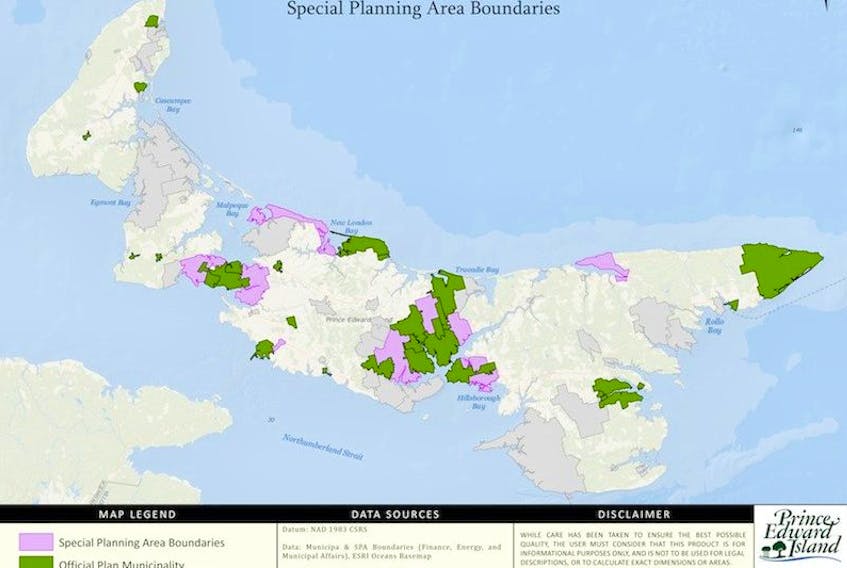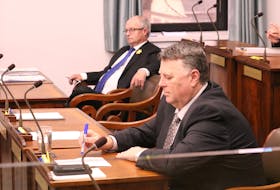Why has it been so difficult for Islanders and their political leaders to adopt a stronger land use planning regime?
Over the past 40 years, there have been several official studies and reports, beginning with the 1973 report of the Royal Commission on Land Ownership and Land Use, and progressing through the 1990 report of the Royal Commission on the Land, the 1997 report of the Round Table on Resource Land Use and Stewardship, the 2009 report of the Commission on Land and Local Governance, and the 2014 report of the Task Force on Land Use Policy. Interspersed with these have been numerous reports by Standing Committees of the Legislative Assembly tasked with consulting the public on proposed changes to legislation.
Despite many recommendations to strengthen controls on land use, progress has been modest. Indeed, there is a feeling that all previous public consultations regarding land use planning have been unduly influenced by “landless intellectuals.” Some believe that calls for stricter controls have been trumped repeatedly by those who apply political pressure to maintain the status quo, mainly the farm lobby and property developers.
In contrast, when it comes to land ownership, Prince Edward Island is unique among Canadian jurisdictions in applying strict limits on aggregate land holdings for individuals and corporations. The need for continued controls was affirmed in the 2013 report of the Commission on the Lands Protection Act.
Politically, the question posed above is not easy to resolve. If it were, we would have witnessed major changes in the way land is used and in the way decisions are made.
In releasing the report of the Task Force on Land Use Policy, the Minister responsible, the Hon. Wes Sheridan, stated in a press release dated June 20, 2014: “Land use in Prince Edward Island is an issue that affects the economy, the environment and the quality of life of all Islanders. The provincial government will review the recommendations in detail, and while some of the recommendations can be implemented relatively quickly, others will require more time and consideration.”
The press release went on to state that as a starting point, the government has adopted Statements of Provincial Interest. The statements, formulated by the Task Force, will guide the development and implementation of land use policies by government and municipalities. The statements include the protection of the quality and quantity of water, prime agricultural land, the rural landscape, natural areas and coastal areas. The Task Force’s key recommendations include provincial land use policies, establishment of a third-party provincial planning commission and development of regional land use plans.
Currently, 32 municipal official plans provide a framework for land use planning decisions over 10 per cent of the province, and a disjointed set of provincially-administered rules applies to the remaining 90 per cent. These rules are not connected to a provincial policy, because there is none. In fact, there are a whopping 30,000 approved vacant building lots in areas outside the 32 official plan municipalities.
Why has the provincial government permitted so much precious land —often our richest agricultural land — to be tied up in subdivision developments? The answer may lie in the potential benefits to be derived from development: construction and maintenance jobs, sales tax revenue and, most significantly, property tax revenue — steeper for non-residents.
The question therefore follows: “Is the provincial government so addicted to the revenue from land development that there is no turning back the tide?”
In his book, If You’re Stronghearted: Prince Edward Island in the 20th Century, Edward MacDonald had this to say about land: “On a small island, it bears repeating, land is a finite and fragile resource. Most of us have yet to concede just how fragile. Whether it is labelled environmentalism, sustainable development, or stewardship, the need to protect the land and the waters that surround it can only grow in importance. In the process, it will pose difficult choices between freedom and regulation, employment and preservation, private gain and the public good. In many ways, those choices are already upon us.”
Since gaining hard-won title to their lands, Islanders have held tightly to the belief that “The land is mine to do with as I please.” Would stricter controls on land use be good for Prince Edward Island, or is the status quo the better option?
Jean-Paul Arsenault served as executive secretary to the Round Table on Resource Land Use and Stewardship and the Commission on Land and Local Governance, and was a member of the team providing support to the Commission on the Lands Protection Act.
Why has it been so difficult for Islanders and their political leaders to adopt a stronger land use planning regime?
Over the past 40 years, there have been several official studies and reports, beginning with the 1973 report of the Royal Commission on Land Ownership and Land Use, and progressing through the 1990 report of the Royal Commission on the Land, the 1997 report of the Round Table on Resource Land Use and Stewardship, the 2009 report of the Commission on Land and Local Governance, and the 2014 report of the Task Force on Land Use Policy. Interspersed with these have been numerous reports by Standing Committees of the Legislative Assembly tasked with consulting the public on proposed changes to legislation.
Despite many recommendations to strengthen controls on land use, progress has been modest. Indeed, there is a feeling that all previous public consultations regarding land use planning have been unduly influenced by “landless intellectuals.” Some believe that calls for stricter controls have been trumped repeatedly by those who apply political pressure to maintain the status quo, mainly the farm lobby and property developers.
In contrast, when it comes to land ownership, Prince Edward Island is unique among Canadian jurisdictions in applying strict limits on aggregate land holdings for individuals and corporations. The need for continued controls was affirmed in the 2013 report of the Commission on the Lands Protection Act.
Politically, the question posed above is not easy to resolve. If it were, we would have witnessed major changes in the way land is used and in the way decisions are made.
In releasing the report of the Task Force on Land Use Policy, the Minister responsible, the Hon. Wes Sheridan, stated in a press release dated June 20, 2014: “Land use in Prince Edward Island is an issue that affects the economy, the environment and the quality of life of all Islanders. The provincial government will review the recommendations in detail, and while some of the recommendations can be implemented relatively quickly, others will require more time and consideration.”
The press release went on to state that as a starting point, the government has adopted Statements of Provincial Interest. The statements, formulated by the Task Force, will guide the development and implementation of land use policies by government and municipalities. The statements include the protection of the quality and quantity of water, prime agricultural land, the rural landscape, natural areas and coastal areas. The Task Force’s key recommendations include provincial land use policies, establishment of a third-party provincial planning commission and development of regional land use plans.
Currently, 32 municipal official plans provide a framework for land use planning decisions over 10 per cent of the province, and a disjointed set of provincially-administered rules applies to the remaining 90 per cent. These rules are not connected to a provincial policy, because there is none. In fact, there are a whopping 30,000 approved vacant building lots in areas outside the 32 official plan municipalities.
Why has the provincial government permitted so much precious land —often our richest agricultural land — to be tied up in subdivision developments? The answer may lie in the potential benefits to be derived from development: construction and maintenance jobs, sales tax revenue and, most significantly, property tax revenue — steeper for non-residents.
The question therefore follows: “Is the provincial government so addicted to the revenue from land development that there is no turning back the tide?”
In his book, If You’re Stronghearted: Prince Edward Island in the 20th Century, Edward MacDonald had this to say about land: “On a small island, it bears repeating, land is a finite and fragile resource. Most of us have yet to concede just how fragile. Whether it is labelled environmentalism, sustainable development, or stewardship, the need to protect the land and the waters that surround it can only grow in importance. In the process, it will pose difficult choices between freedom and regulation, employment and preservation, private gain and the public good. In many ways, those choices are already upon us.”
Since gaining hard-won title to their lands, Islanders have held tightly to the belief that “The land is mine to do with as I please.” Would stricter controls on land use be good for Prince Edward Island, or is the status quo the better option?
Jean-Paul Arsenault served as executive secretary to the Round Table on Resource Land Use and Stewardship and the Commission on Land and Local Governance, and was a member of the team providing support to the Commission on the Lands Protection Act.









